- Home
- John D. MacDonald
The Good Old Stuff
The Good Old Stuff Read online
Praise for John D. MacDonald
“My favorite novelist of all time.”
—DEAN KOONTZ
“For my money, John D. MacDonald’s Travis McGee is one of the great characters in contemporary American fiction—not crime fiction; fiction, period—and millions of readers surely agree.”
—The Washington Post
“MacDonald isn’t simply popular; he’s also good.”
—ROGER EBERT
“MacDonald’s books are narcotic and, once hooked, a reader can’t kick the habit until the supply runs out.”
—Chicago Tribune Book World
“Travis McGee is one of the most enduring and unusual heroes in detective fiction.”
—The Baltimore Sun
“[John D. MacDonald] remains one of my idols.”
—DONALD WESTLAKE
“A dominant influence on writers crafting the continuing series character.”
—SUE GRAFTON
“The Dickens of mid-century America—popular, prolific and … conscience-ridden about his environment … a thoroughly American author.”
—The Boston Globe
“It will be for his crisply written, smoothly plotted mysteries that MacDonald will be remembered.”
—USA Today
“MacDonald had the marvelous ability to create attention-getting characters who doubled as social critics. In MacDonald novels, it is the rule rather than the exception to find, in the midst of violence and mayhem, a sentence, a paragraph, or several pages of rumination on love, morality, religion, architecture, politics, business, the general state of the world or of Florida.”
—Sarasota Herald-Tribune
BY JOHN D. MACDONALD
The Brass Cupcake
Murder for the Bride
Judge Me Not
Wine for the Dreamers
Ballroom of the Skies
The Damned
Dead Low Tide
The Neon Jungle
Cancel All Our Vows
All These Condemned
Area of Suspicion
Contrary Pleasure
A Bullet for Cinderella
Cry Hard, Cry Fast
You Live Once
April Evil
Border Town Girl
Murder in the Wind
Death Trap
The Price of Murder
The Empty Trap
A Man of Affairs
The Deceivers
Clemmie
Cape Fear (The Executioners)
Soft Touch
Deadly Welcome
Please Write for Details
The Crossroads
The Beach Girls
Slam the Big Door
The End of the Night
The Only Girl in the Game
Where Is Janice Gantry?
One Monday We Killed Them All
A Key to the Suite
A Flash of Green
The Girl, the Gold Watch & Everything
On the Run
The Drowner
The House Guest
End of the Tiger and Other Stories
The Last One Left
S*E*V*E*N
Condominium
Other Times, Other Worlds
Nothing Can Go Wrong
The Good Old Stuff
One More Sunday
More Good Old Stuff
Barrier Island
A Friendship: The Letters of Dan Rowan and John D. MacDonald, 1967–1974
The Travis McGee Series
The Deep Blue Good-by
Nightmare in Pink
A Purple Place for Dying
The Quick Red Fox
A Deadly Shade of Gold
Bright Orange for the Shroud
Darker than Amber
One Fearful Yellow Eye
Pale Gray for Guilt
The Girl in the Plain Brown Wrapper
Dress Her in Indigo
The Long Lavender Look
A Tan and Sandy Silence
The Scarlet Ruse
The Turquoise Lament
The Dreadful Lemon Sky
The Empty Copper Sea
The Green Ripper
Free Fall in Crimson
Cinnamon Skin
The Lonely Silver Rain
The Official Travis McGee Quizbook
The Good Old Stuff is a work of fiction. Names, characters, places, and incidents either are the product of the author’s imagination or are used fictitiously. Any resemblance to actual persons, living or dead, events, or locales is entirely coincidental.
2013 Random House Trade Paperback eBook Edition
Copyright © 1982 by John D. MacDonald Publishing, Inc.
Introduction copyright © 2013 by Dean Koontz
All rights reserved.
Published in the United States by Random House Trade Paperbacks, an imprint of The Random House Publishing Group, a division of Random House, Inc., New York.
RANDOM HOUSE TRADE PAPERBACKS and colophon are trademarks of Random House, Inc.
eISBN: 978-0-8129-8471-2
Cover design: Joe Montgomery
www.atrandom.com
v3.1
The Singular John D. MacDonald
Dean Koontz
When I was in college, I had a friend, Harry Recard, who was smart, funny, and a demon card player. Harry was a successful history major, while I passed more time playing pinochle than I spent in class. For the three and a half years that I required to graduate, I heard Harry rave about this writer named John D. MacDonald, “John D” to his most ardent readers. Of the two of us, Harry was the better card player and just generally the cooler one. Consequently, I was protective of my position, as an English major, to be the better judge of literature, don’t you know. I remained reluctant to give John D a look.
Having read mostly science fiction, I found many of my professors’ assigned authors markedly less exciting than Robert Heinlein and Theodore Sturgeon, but I was determined to read the right thing. For every Flannery O’Connor whose work I could race through with delight, there were three like Virginia Woolf, who made me want to throw their books off a high cliff and leap after them. Nevertheless, I continued to shun Harry’s beloved John D.
Five or six years after college, I was a full-time writer with numerous credits in science fiction, struggling to move into suspense and mainstream work. I was making progress but not fast enough to suit me. By now I knew that John D was widely admired, and I finally sat down with one of his books. In the next thirty days, I read thirty-four of them. The singular voice and style of the man overwhelmed me, and the next novel I wrote was such an embarrassingly slavish imitation of a MacDonald tale that I had to throw away the manuscript.
I apologized to Harry for doubting him. He was so pleased to hear me proclaiming the joys of John D that he only said “I told you so” on, oh, twenty or thirty occasions.
Over the years, I have read every novel by John D at least three times, some of them twice that often. His ability to evoke a time and place—mostly Florida but also the industrial Midwest, Las Vegas, and elsewhere—was wonderful, and he could get inside an occupation to give you the details and the feel of it like few other writers I’ve ever read. His pacing was superb, the flow of his prose irresistible, and his suspense watch-spring tight.
Of all his manifest strengths as a writer, however, I am most in awe of his ability to create characters who are as real as anyone I’ve met in life. John D sometimes paused in the headlong rush of his story to spin out pages of background on a character. At first when this happened, I grumbled about getting on with the story. But I soon discovered that he could make the character so fascinating that when the story began to race forward again, I wanted
it to slow down so I could learn more about this person who so intrigued and/or delighted me. There have been many good suspense novelists in recent decades, but in my experience, none has produced characters with as much humanity and truth as those in MacDonald’s work.
Like most who have found this author, I am an admirer of his Travis McGee series, which features a first-person narrator as good as any in the history of suspense fiction and better than most. But I love the standalone novels even more. Cry Hard, Cry Fast. Where Is Janice Gantry? The Last One Left. A Key to the Suite. The Drowner. The Damned. A Bullet for Cinderella. The Only Girl in the Game. The Crossroads. All These Condemned. Those are not my only favorites, just a few of them, and many deal with interesting businesses and occupations. Mr. MacDonald’s work gives the reader deep and abiding pleasure for many reasons, not the least of which is that it portrays the contemporary life of his day with as much grace and fidelity as any writer of the period, and thus it also provides compelling social history.
In 1985, when my publisher, Putnam, wanted to send advance proof copies of Strangers to Mr. MacDonald among others, I literally grew shaky at the thought of him reading it. I suggested that they shouldn’t send it to him, that, as famous and prolific as he was, the proof would be an imposition on him; in truth, I feared that he would find the novel unsatisfying. Putnam sent it to him anyway, and he gave us an enthusiastic endorsement. In addition, he wrote to me separately, in an avuncular tone, kindly advising me how to avoid some of the pitfalls of the publishing business, and he wrote to my publisher asking her to please carefully consider the packaging of the book and not condemn it to the horror genre. She more or less condemned it to the genre anyway, but I took his advice to heart.
In my experience, John D. MacDonald, the man, was as kind and thoughtful as his fiction would lead you to believe that he must be. That a writer’s work accurately reflects his soul is a rarer thing than you might imagine, but in his case, the reflection is clear and true. For that reason, it has been a special honor, in fact a grace, to be asked to write this introduction.
Reader, prepare to be enchanted by the books of John D. MacDonald. And Harry, I am not as much of an idiot as I was in years gone by—though I know you won’t let me get away with claiming not to be to any degree an idiot anymore.
To the memory of a lot of good men who wrote well for the pulp magazines but had less luck than I
CONTENTS
Cover
Other Books by This Author
Title Page
Copyright
Introduction by Dean Koontz
Dedication
Introduction by Francis M. Nevins, Jr.
Author’s Foreword
MURDER FOR MONEY
(All That Blood Money Can Buy, Detective Tales, April 1952)
DEATH WRITES THE ANSWER
(This One Will Kill You, New Detective, May 1950)
MIRANDA
(15 Mystery Stories, October 1950)
THEY LET ME LIVE
(Doc Savage, July–August 1947)
BREATHE NO MORE
(Breathe No More, My Lovely, Detective Tales, May 1950)
FROM SOME HIDDEN GRAVE
(The Lady Is a Corpse, Detective Tales, September 1950)
A TIME FOR DYING
(Tune in on Station Homicide, New Detective, September 1948)
NOOSE FOR A TIGRESS
(Dime Detective, August 1952)
MURDER IN MIND
(Mystery Book Magazine, Winter 1949)
CHECK OUT AT DAWN
(Night Watch, Detective Tales, May 1950)
SHE CANNOT DIE
(The Tin Suitcase, Doc Savage, May–June 1948)
DEAD ON THE PIN
(Mystery Book Magazine, Summer 1950)
A TRAP FOR THE CARELESS
(Detective Tales, March 1950)
Copyright Acknowledgments
About the Author
INTRODUCTION
Francis M. Nevins, Jr.
For millions of readers John D. MacDonald is the consummate storyteller of our time, a writer who, with his energetic prose, his vivid sense of character, his all but miraculous skill at describing every sort of person and setting and event with economy, elegance, and total credibility, makes us turn and turn his pages with our minds in awe and our hearts hovering around our Adam’s apple. The thirteen stories in this collection demonstrate how fantastically good his best work was at the start of his career.
MacDonald was born in Sharon, Pennsylvania, on July 24, 1916. His father was a strong-willed workaholic who rose Horatio Alger-like from humble origins to become a top executive at a firearms company in Utica, New York. A near-fatal attack of mastoiditis and scarlet fever at age twelve confined young MacDonald to bed for a year, and lack of anything else to do in those days before radio and TV virtually forced him to read or have his mother read to him, huge quantities of books. As soon as he was back on his feet, he began haunting the public library, compulsively devouring every book on the shelves.
After graduating from the Utica Free Academy in 1933, MacDonald took some courses at the University of Pennsylvania’s Wharton School of Finance, then transferred to Syracuse University where, in 1938, he received a B.S. in Business Administration. He married fellow Syracuse graduate Dorothy Prentiss the same year, and was awarded an M.B.A. from Harvard Business School in June 1939. After an assortment of jobs that he hated, he accepted a lieutenant’s commission in the Army in June 1940, and was assigned to procurement work in Rochester, N. Y. until June 1943, when he was sent overseas to Staff Headquarters, New Delhi, India. A year later he was recruited by the Office of Strategic Services, the forerunner of the CIA, and served in Columbo, Ceylon as a branch commander of an Intelligence detachment, rising to the rank of Lieutenant Colonel.
During the idle times, instead of writing his wife letters that he knew would be heavily censored, MacDonald began writing and sending her short stories. One of these, “Interlude in India,” Dorothy sold for $25 to Whit and Hallie Burnett’s prestigious Story Magazine, in whose July-August 1946 issue it appeared. “I can’t describe what it was like,” MacDonald said recently, “when I found out that my words had actually sold…. I felt as if I were a fraud … as if I were trying to be something that I wasn’t. Then I thought, my goodness, maybe I could actually be one.”
At the end of the war MacDonald was entitled to four months of stateside terminal leave with pay before his official discharge. He spent the time behind the typewriter, working harder than ever before in his life, putting in 80 hours a week, cranking out 800,000 words worth of short stories, keeping 30 to 35 yarns in the mail at all times—and selling not a word. Finally, early in 1946, a few of the less-than-first-class pulp mystery magazines like Detective Tales and Mammoth Mystery began to buy from him, and by the end of the year he had earned about $6,000, enough to support himself and Dorothy and their seven-year-old son in modest style. For the next half-dozen years most of MacDonald’s income was from magazines, primarily the great pulps like Black Mask, Dime Detective, Doc Savage, The Shadow, and Mystery Book, whose gaudy and lurid covers could still be seen on every newsstand in those immediate postwar years. Once in a while a MacDonald story would sell to a slick periodical like Esquire, Liberty, or Cosmopolitan that paid top dollar, but the vast majority of his tales of the late forties and early fifties went to the pulps, and his name became a fixture on those garish covers several times a month. He made so many pulp sales so quickly that some magazines would run two, three, or even four of his stories in a single issue, one under his own byline, and the rest under “house names.”
MacDonald was the last great American mystery writer who honed his storytelling skills in the action-detective pulps as Hammett and Chandler and Gardner and Woolrich had done before him. During the half-dozen years after the war he produced more than two hundred pulp tales whose variety in length and content is astonishing. There were two Westerns,1 at least 21 sports stories, well over 40 ventures into scie
nce fiction,2 but most of MacDonald’s energies during his formative years as a writer were concentrated in the crime-suspense genre, to which he contributed more than 160 stories between 1946 and the early 1950s.3
Gingerly turning the now brown-edged pages of those old pulps and tracing MacDonald’s apprenticeship as a tale-spinner, we can watch him growing stronger in countless ways in record time. He was writing everything from straight detective stories like “The Simplest Poison” and biter-bit yarns like “Death Writes the Answer” to psychological suspense tales like “Miranda” or thrillers like “Trap for a Tigress.” He was writing about disturbed war veterans, professional criminals and gamblers, city cops, country cops, and all sorts of private adventurers, including one or two recognizable prototypes of that perpetually disappointed boat bum and contemporary knight, Travis McGee. He was experimenting with mini-minis of under two thousand words and short novels the length of a Simenon and everything in between. The best of his stories are masterful and the worst marginal, but in grinding them out at breakneck speed he was evolving the uncanny instincts that shape his sixty-plus novels, from The Brass Cupcake (1950) to Cinnamon Skin (1982).
Several of MacDonald’s earliest pulp crime stories were set in the China-Burma-India locales in which he’d spent the war. But magazine editor Babette Rosmond persuaded him to take off the pith helmet and start writing about the United States, and from then on the majority of his stories dealt with the postwar American scene. Indeed MacDonald portrayed more vividly and knowledgeably than any other crime writer the readjustment of American society in general and American business in particular from a war footing to a consumer-oriented peacetime economy, and the redemption and return to the real world of all sorts of warhaunted people on the verge of self-ruination by drink and detachment. Several stories of this sort, such as “They Let Me Live” and “She Cannot Die,” are collected here, and even though MacDonald has eliminated or updated some of the topical references that he feels would be lost on today’s reader, perhaps enough remains of the ambience of the late forties and early fifties to demonstrate how the best crime fiction of any period bears witness to later generations about the way we lived then.

 More Good Old Stuff
More Good Old Stuff The Long Lavender Look
The Long Lavender Look April Evil
April Evil I Could Go on Singing
I Could Go on Singing Death Quotient and Other Stories
Death Quotient and Other Stories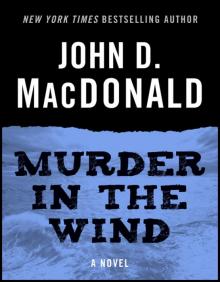 Murder in the Wind
Murder in the Wind The Quick Red Fox
The Quick Red Fox The Scarlet Ruse
The Scarlet Ruse Darker Than Amber
Darker Than Amber One Monday We Killed Them All
One Monday We Killed Them All A Deadly Shade of Gold
A Deadly Shade of Gold The Girl, the Gold Watch and Everything
The Girl, the Gold Watch and Everything The Damned
The Damned The Brass Cupcake
The Brass Cupcake Cinnamon Skin
Cinnamon Skin Bright Orange for the Shroud
Bright Orange for the Shroud The Empty Trap
The Empty Trap Where Is Janice Gantry?
Where Is Janice Gantry?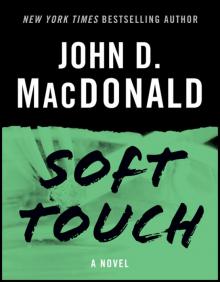 Soft Touch
Soft Touch Condominium
Condominium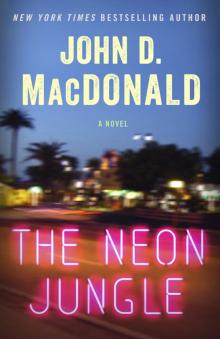 The Neon Jungle
The Neon Jungle Girl In The Plain Brown Wrapper
Girl In The Plain Brown Wrapper All These Condemned
All These Condemned Area of Suspicion
Area of Suspicion The Crossroads
The Crossroads The Good Old Stuff
The Good Old Stuff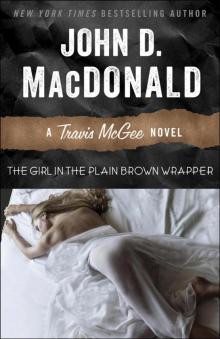 The Girl in the Plain Brown Wrapper
The Girl in the Plain Brown Wrapper The Beach Girls
The Beach Girls A Purple Place For Dying
A Purple Place For Dying The Turquoise Lament
The Turquoise Lament The Empty Copper Sea
The Empty Copper Sea You Live Once
You Live Once The House Guests
The House Guests A Bullet for Cinderella
A Bullet for Cinderella A Man of Affairs
A Man of Affairs A Key to the Suite
A Key to the Suite Please Write for Details
Please Write for Details Free Fall in Crimson
Free Fall in Crimson The Dreadful Lemon Sky
The Dreadful Lemon Sky Judge Me Not
Judge Me Not The Price of Murder
The Price of Murder On the Run
On the Run The Deep Blue Good-Bye
The Deep Blue Good-Bye The Only Girl in the Game
The Only Girl in the Game The Green Ripper
The Green Ripper Kitten on a Trampoline
Kitten on a Trampoline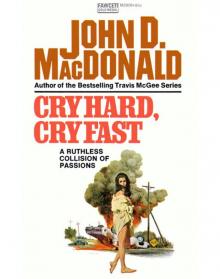 Cry Hard, Cry Fast
Cry Hard, Cry Fast A Flash of Green
A Flash of Green The End of the Night
The End of the Night Contrary Pleasure
Contrary Pleasure Cape Fear
Cape Fear The Lonely Silver Rain
The Lonely Silver Rain Slam the Big Door
Slam the Big Door The Last One Left
The Last One Left The Drowner
The Drowner Death Trap
Death Trap Wine of the Dreamers: A Novel
Wine of the Dreamers: A Novel A Tan and Sandy Silence
A Tan and Sandy Silence One Fearful Yellow Eye
One Fearful Yellow Eye Border Town Girl
Border Town Girl Weep for Me
Weep for Me Dress Her in Indigo
Dress Her in Indigo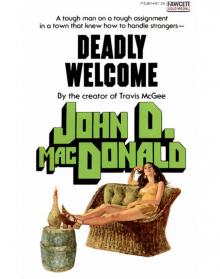 Deadly Welcome
Deadly Welcome Cancel All Our Vows
Cancel All Our Vows Murder for the Bride
Murder for the Bride End of the Tiger
End of the Tiger